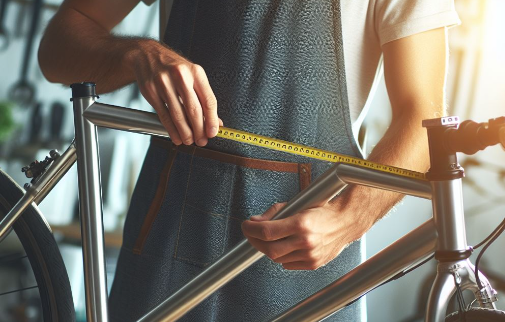Selecting the right bike frame is crucial for ensuring a comfortable ride. A frame that fits well not only enhances your cycling experience but also boosts efficiency and power. Measuring a bike frame accurately is the first step towards finding your perfect cycling match.
It’s a process that, when done correctly, aligns your body’s geometry with the bike’s, resulting in a seamless union of rider and machine. This harmony between rider and bicycle can transform a mundane commute into a joyful journey.
So, whether you’re a seasoned cyclist or just starting, understanding how to measure a bike frame is the key to unlocking the full potential of your two-wheeled adventure.
Why Measuring Bike Frame Is Important?
Accurate measurement of a bicycle frame is crucial for cyclists. It ensures the bicycle fits the rider’s body, providing comfort during rides and preventing strain or injury. A well-fitted bike enhances performance, allowing for efficient power transfer and better handling.

Contrarily, an ill-fitting frame can lead to discomfort, reduced control, and even long-term musculoskeletal problems. It’s essential for riders to invest time in finding their correct size to enjoy and excel in their cycling endeavors.
Riding a bicycle that doesn’t fit is like wearing shoes in the wrong size – it’s uncomfortable and detrimental to performance. Therefore, understanding the importance of bike frame measurement is not just about comfort; it’s about ensuring a safe and optimal riding experience.
What You’ll Need to Measure a Bike Frame?
Measuring a bicycle frame requires precision, and for that, you’ll need the right tools. A reliable measuring tape is required for determining the length of the seat tube and top tube. A steady level is crucial to ensure your bike is perfectly horizontal when taking measurements.

A bicycle’s size chart is also essential, as it helps you translate the measurements into the actual frame size you need. For accuracy, place the level on the seat tube and ensure the bubble is centered.
When using the tape measure, pull it taut to avoid sagging, which can lead to incorrect measurements. Always cross-check your measurements with the size chart to confirm you have the right frame size.
With these tools and techniques, you’ll be set to find the perfect fit for your cycling adventures.
How to Measure a Bike Frame?
Preparing your bicycle for frame measurement is essential for accuracy. Start by placing the bicycle on a level surface and remove any accessories that might obstruct the process.

Common errors include not accounting for the angle of the seat tube and measuring to the end of the seat post, which can vary. To avoid these, compute the seat tube length from the center of the bottom bracket to the top of the seat tube junction, and ensure the measuring tape is straight.
Accurate measurements are vital for optimal bicycle fit and performance, so take your time to do it right. Now, follow the below guide to learn how to measure a bike frame size:
How to Measure Seat Tube Length?
To find out the bicycle’s seat tube length, position the bike upright. Locate the top of the seat tube, where the seat post enters the frame, and the center of the bottom bracket, where the crank arms meet.
Use a measuring tape to find the distance between these two points, running the tape along the length of the tube. This measurement is crucial for determining the bike’s frame size, ensuring a comfortable and efficient ride.
How to Measure Top Tube Length?
Measuring the top tube length is essential for understanding bicycle fit. Stretch your tape measure horizontally from the head tube’s center, directly where the fork protrudes, to the seat tube’s center at the top.
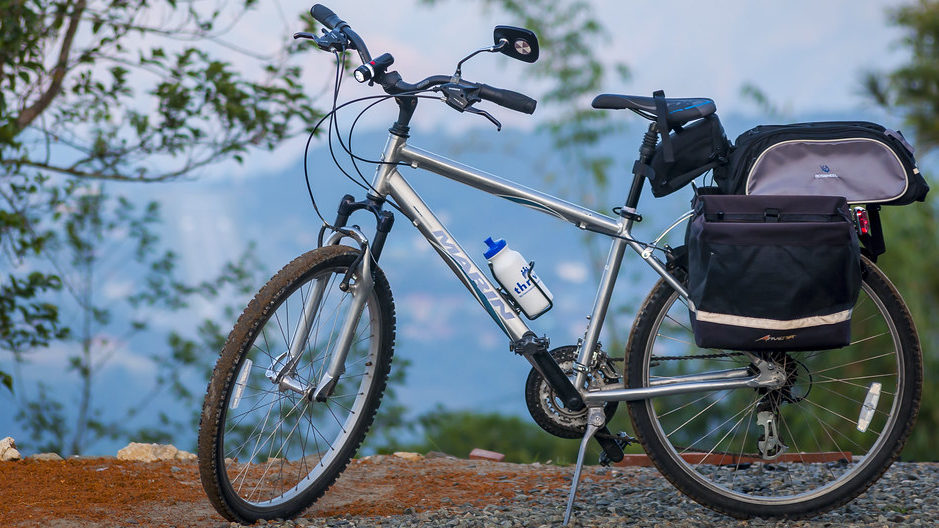
Ensure the bicycle is level for an accurate measurement. This distance influences your reach to the handlebars and overall comfort while cycling.
How to Measure Head Tube Length?
The head tube length affects your bike’s steering and handlebar height. To measure, locate the bottom of the head tube, near the fork crown, and the top, where the top cap of the headset sits.
Compute this segment vertically. A longer head tube offers a more upright riding position, while a shorter one provides a more aggressive stance.
How to Measure Standover Height?
Standover height is key for safety and comfort. To measure, ensure the bicycle is upright. Measure from the ground directly up to the top of the top tube, just in front of the saddle.
This should be done along the length where you would normally mount the bike. There should be a clearance between your body and the frame when standing over the bicycle.
How to Measure Reach?
To find out the reach on a bicycle frame, you’ll need a level, tape measure, and plumb bob. Start by aligning the level with the bike’s head tube, ensuring it’s perpendicular to the ground. Mark the level directly above the center of the bottom bracket.
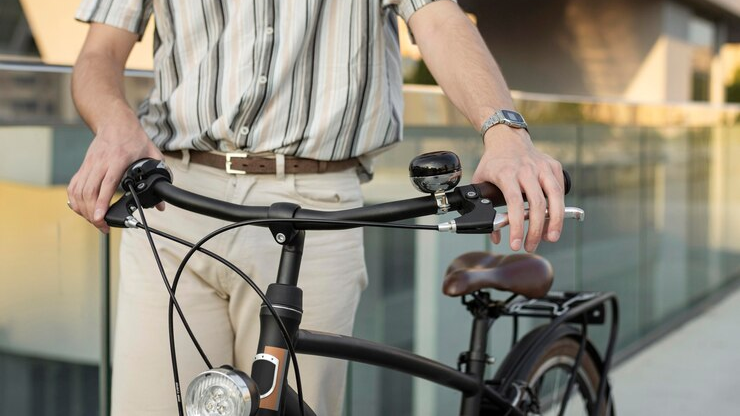
Next, suspend the plumb bob from the mark on the level and let it touch the bottom bracket. Measure the horizontal distance from the plumb line to the center of the head tube. This measurement is the reach, indicating the rider’s horizontal distance to the handlebars.
How to Measure Stack?
Measuring the stack requires a vertical assessment of the bicycle frame. Place your bicycle on a level surface and ensure it’s stable. Locate the center of the bottom bracket and mark it.
Using a level, extend a line upwards from the center of the bottom bracket to intersect with the extension of the head tube’s top.
Measure the vertical distance between these two points. This distance is the stack, which determines the bike’s head tube height and influences the rider’s upright position.
How to Measure Chainstay Length?
Chainstay length impacts bicycle handling and is measured from the center of the bottom bracket to the center of the rear axle. To measure, position the bike so that it’s level and stable. Use measuring tape to find the distance between the bottom bracket and the rear axle.
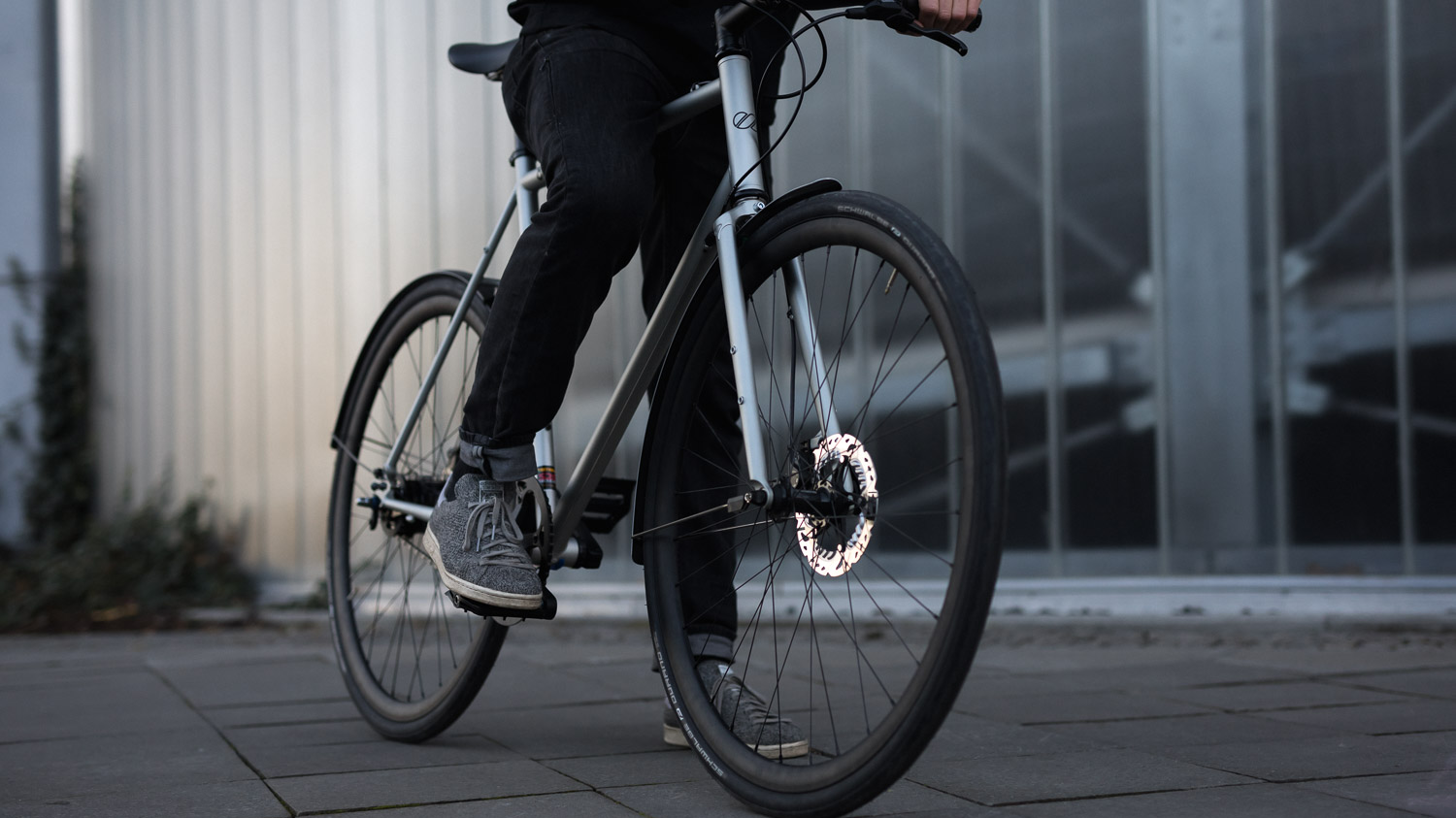
Ensure the tape follows a straight line parallel to the chainstays. This length affects the bicycle’s stability and acceleration, with longer chainstays providing a smoother ride and shorter ones allowing for quicker maneuvering.
How Bike Frame Sizing Charts Work? Explained
Bike frame sizing charts are essential tools for cyclists to find the right fit.
- Road bikes, known for their speed and agility, typically have a sizing chart that emphasizes a snugger fit for aerodynamics and efficiency.
- Mountain bikes, built for rugged terrain, offer a more generous sizing to accommodate maneuverability and control.
- Hybrid and city bikes blend these aspects, providing a comfortable upright position. To interpret these charts, match your height range with the corresponding frame size.
For precision, consider your leg inseam length as well, as this affects the standover height. Always cross-reference your measurements with the specific bicycle type’s chart to ensure the best fit, as variations can occur between different styles and manufacturers.
Remember, the right size means a more enjoyable and effective ride.
Common Mistakes to Avoid While Measuring a Bike Frame
Apart from learning how to measure a bicycle frame size, it’s crucial to avoid common pitfalls that can lead to inaccurate results. Firstly, ensure you’re using the correct tools; a flexible tape measure can conform to the bicycle’s geometry better than a rigid ruler.
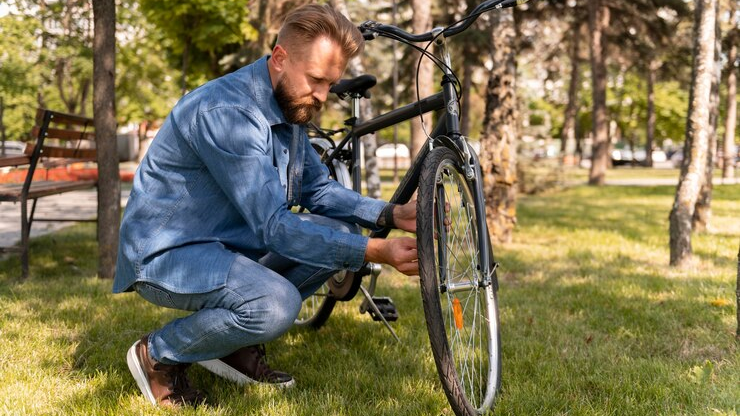
Measure twice for consistency, focusing on the seat tube length from the center of the bottom bracket to the top of the seat tube, as this is a standard reference point. Avoid measuring to the top of the seat post, which can vary.
Also, be mindful of the top tube length; horizontal measurements yield more reliable data than slanted ones, especially on modern bikes with sloping designs. Remember, precise measurements are key to finding the perfect bicycle fit, enhancing comfort, and improving performance.
By adhering to these guidelines, you’ll secure accurate dimensions and a better cycling experience.
Conclusion
To find out a bicycle frame correctly is to ensure a ride that’s both comfortable and enjoyable. This guide has highlighted the essential steps on how to measure a bike frame along with common mistakes to avoid for precise measurements.
Accurate sizing is fundamental to cycling performance and comfort, making it imperative for riders to follow these instructions carefully. Whether you’re a seasoned cyclist or new to the sport, taking the time to measure your bike frame properly can significantly enhance your riding experience.
So, grab your tape measure and let’s get started on the path to a perfectly fitted bicycle. Remember, a well-measured bicycle is a well-enjoyed ride.
FAQs
Measure women’s bicycle frame by inseam. Stand with feet apart, and measure the crotch to the floor. Compare to the bike size chart.
Measure the seat tube from the center of the crank to the top of the tube.
Standard bicycle frame sizes vary by type (road, mountain, etc.). Common sizes: XS, S, M, L, XL.
A 20-inch bicycle is generally too small for adults and better suited for children, except for adult-sized BMX models.

